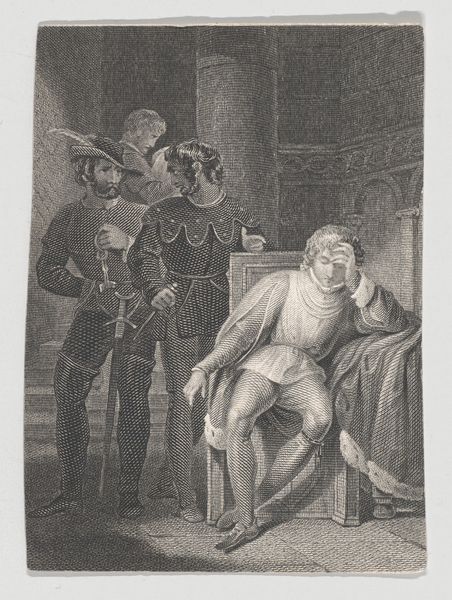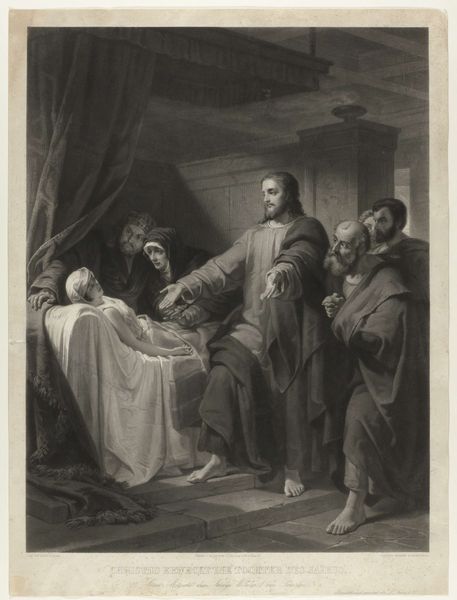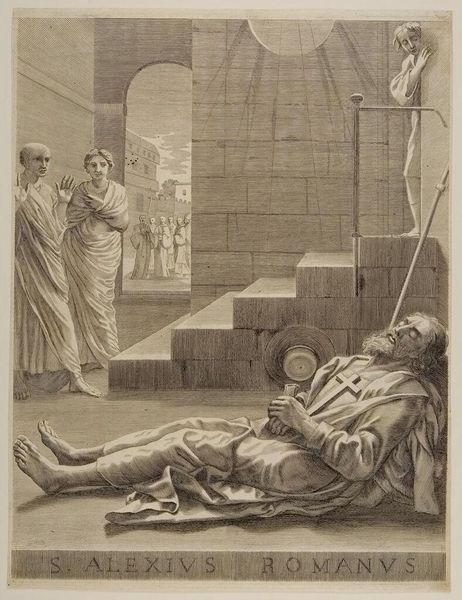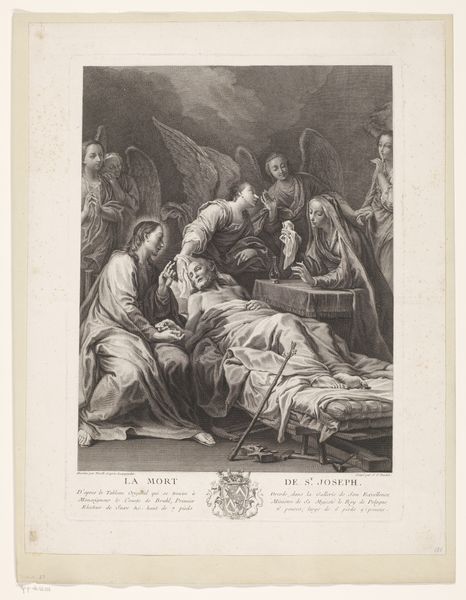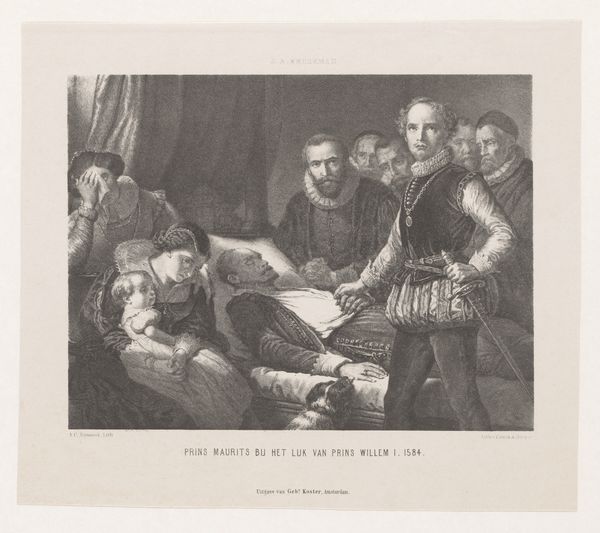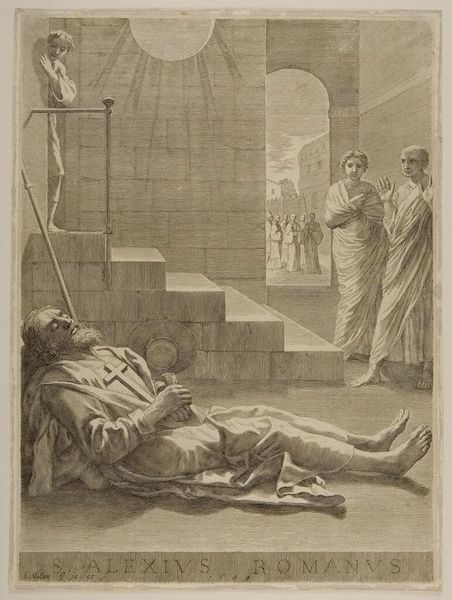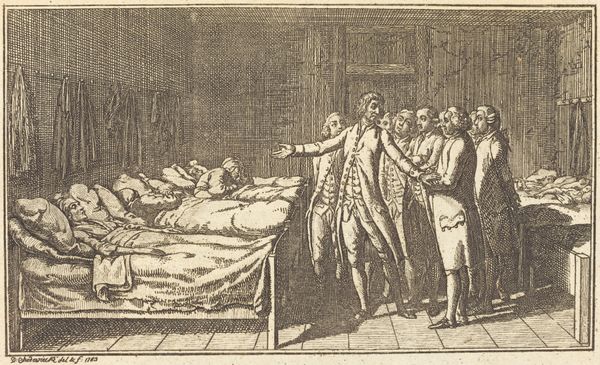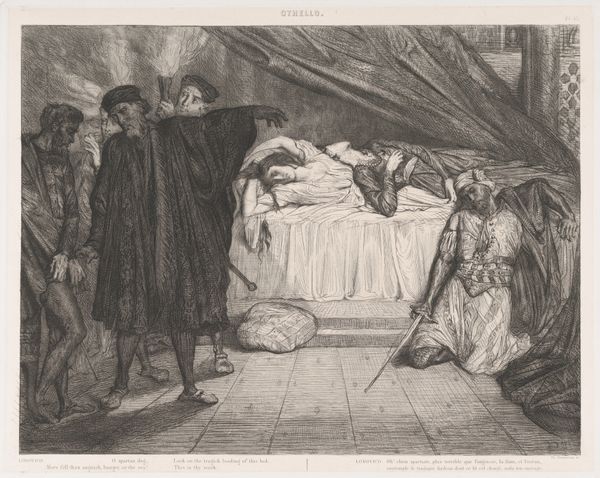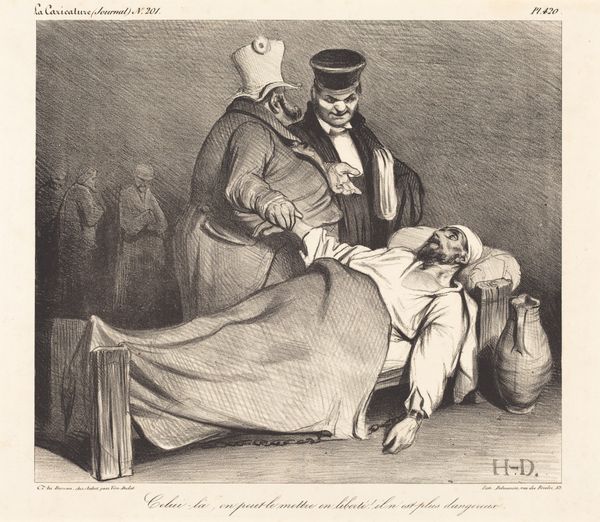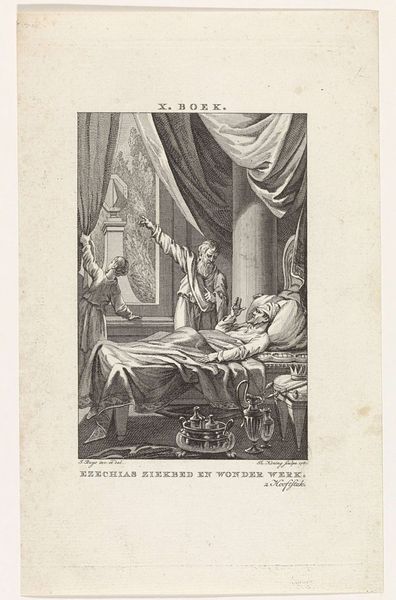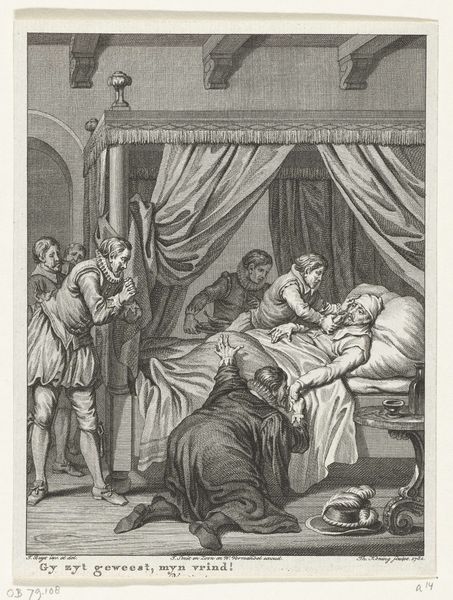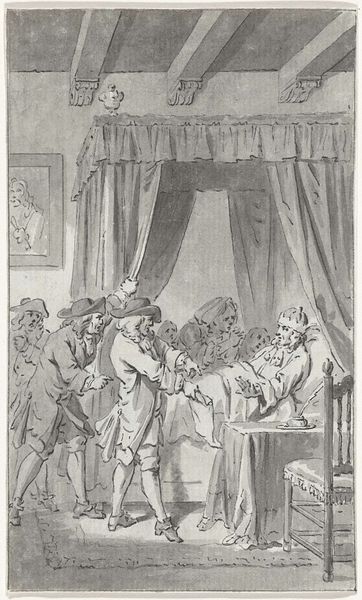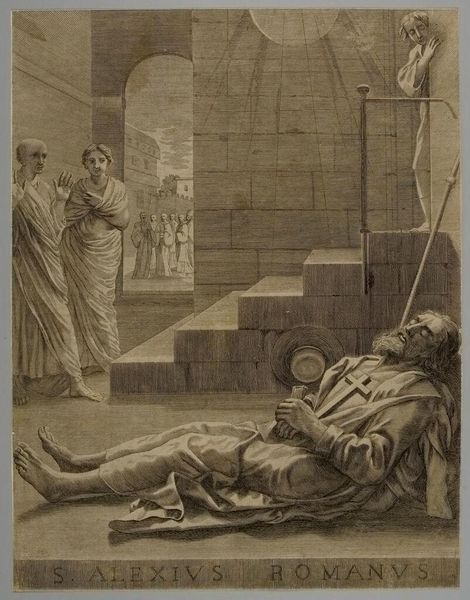
Dimensions: height 150 mm, width 210 mm, height 232 mm, width 318 mm
Copyright: Rijks Museum: Open Domain
Curator: Before us is "The Last Respects Paid to the Corpses of Egmond and Horne, 1568." It's an engraving, crafted around 1854, by an anonymous artist now held in the collection of the Rijksmuseum. Editor: My gut reaction? Somber, stark... like a freeze-frame in a really intense history documentary. There's a weight here, visually, you know? All the darkness. Curator: That visual weight aligns directly with the history it portrays. The execution of Counts Egmond and Horne by the Duke of Alba was a pivotal event in the lead-up to the Dutch Revolt, solidifying resistance against Spanish rule. These men, figures of considerable status, were publicly beheaded, making them martyrs of the Dutch cause. Editor: Martyrs... Absolutely. You feel it, right? The gravity of their sacrifice. All those men standing around the biers, watching... there is such stoicism, yet its very charged with emotion. Like everyone knows things are about to explode, culturally speaking. Curator: Precisely. Their deaths, far from quelling dissent, galvanized national unity. This print, though created centuries later, serves as potent propaganda, reinforcing national identity and historical trauma. Note the somber lighting, the expressions of grief and anger, and the careful staging. Editor: It’s interesting to think about the artist choosing engraving for this image. I wonder, what was that choice? Is the black-and-white adding to the feeling of doom and drama? Perhaps it could symbolize good versus evil or something... Curator: Indeed. The choice of engraving aligns the image with popular media of the period, increasing its reach and cementing a romanticized narrative of Dutch heroism and Spanish oppression. It invites us to reflect on themes of power, justice, and national resistance. Editor: Right. Looking at it, you kind of can't help but project yourself into the moment, feel the reverberations through time. Thinking of all that was born out of such grief. It's almost... awe-inspiring, I guess. In a terribly sad way. Curator: An enduring visual testament to the complexities of historical memory. Editor: It is really something to witness history rendered in black and white like this. A haunting reminder, indeed.
Comments
No comments
Be the first to comment and join the conversation on the ultimate creative platform.
